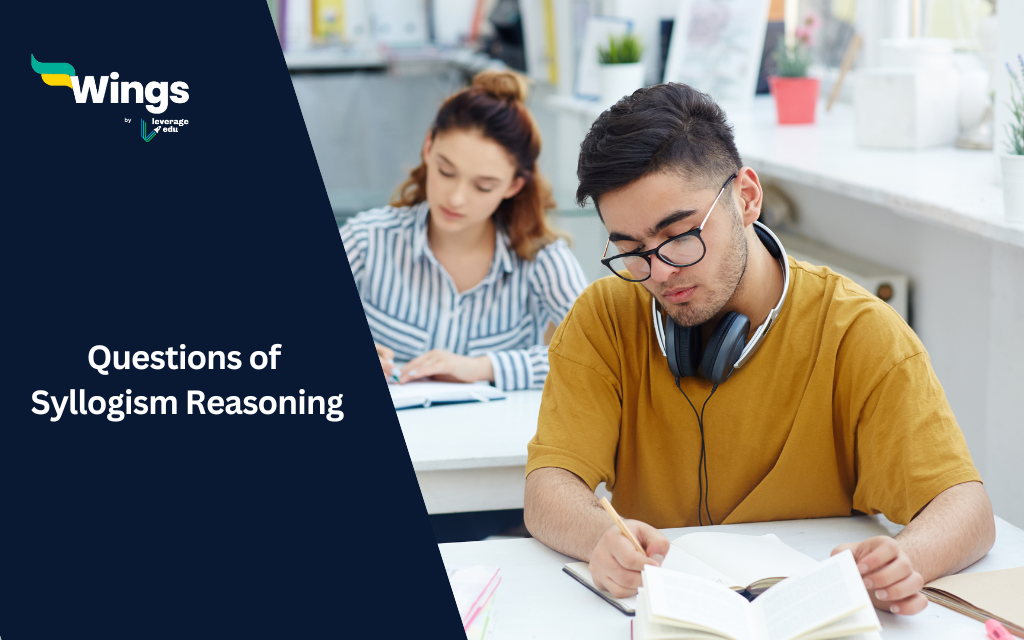Syllogism reasoning is an important part of logical thinking, commonly seen in competitive exams, aptitude tests, and everyday problem-solving. It involves making conclusions based on given statements, usually consisting of two premises and a conclusion. In this article, we’ll explore syllogism reasoning, look at different types of questions, and give you over 27 practice questions to improve your skills.
Contents
What is Syllogism?
Before we dive into the questions, let’s understand what syllogism is. A syllogism has two premises and a conclusion. You need to figure out if the conclusion logically follows from the premises. It’s about making sound inferences based on the provided information.
Syllogisms have this structure:
- Premise 1 (Major Premise): A general statement.
- Premise 2 (Minor Premise): A specific statement.
- Conclusion: An inference based on the premises.
The goal is to decide if the conclusion makes sense based on the given information.
Must Read: Questions of Matching Definitions Reasoning with Answers
Types of Syllogism Questions
Syllogism questions come in different forms, such as:
- Standard Syllogisms: These are straightforward questions where you decide if the conclusion follows logically from the given premises.
- Possibility Cases: Here, you determine if a given conclusion is possible based on the premises. There can be more than one possible conclusion.
- Negative Information: These questions introduce negative statements, making them a bit more challenging. You have to consider the negations of statements when evaluating conclusions.
- Multiple Statements: These questions include more than two premises, often requiring you to analyze a group of interconnected statements.
- Quantified Syllogisms: In this type, premises and conclusions include words like “all,” “some,” “no,” or “none.” You must evaluate conclusions based on these words.
Tips for Solving Syllogism Questions
- Quantifiers: Identify words like “all,” “some,” “no,” or “none” in the statements. These are crucial for evaluating conclusions.
- Use Diagrams: Visualize relationships between sets or categories using diagrams like Venn diagrams to help you see connections.
- Logical Thinking: Apply logical deduction rules, like transitive properties and modus ponens, to assess conclusions.
- Eliminate Options: If you have multiple-choice questions, eliminate choices that don’t logically follow from the given information.
27+ Syllogism Reasoning Practice Questions
Answer: Yes
Answer: Yes
Answer: Yes
Answer: No
Answer: Yes
Answer: Yes
Answer: No
Answer: No
Answer: Yes
Answer: Yes
Also Read:50+ Verbal Classification Questions with Answers
Answer: Yes
Answer: No
Answer: Yes
Answer: Yes
Answer: No
Answer: Yes
Answer: No
Answer: Yes
Answer: Yes
Answer: Yes
Answer: Yes
Answer: No
Answer: Yes
Answer: Yes
Answer: Yes
Also Read: Competitive Exams Preparation – Tips & Tricks to Crack the Exam
Related Blogs
Syllogism reasoning is a valuable skill for logical thinking. Remember to consider quantifiers, use diagrams to visualize relationships, apply logical deduction, and carefully analyze statements. Engaging with these questions is instrumental in honing your analytical thinking, pattern recognition, and problem-solving skills.
For more such study material on Indian Exams, check out Leverage Edu!
 One app for all your study abroad needs
One app for all your study abroad needs














